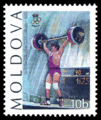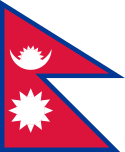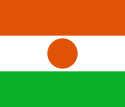Letnie Igrzyska Olimpijskie 1996
 | |
| Stolica igrzysk | |
|---|---|
| Liczba ekip | 197 |
| Liczba sportowców | 10 318 |
| Liczba konkurencji | 271 w 27 dyscyplinach |
| Otwarcie | 19 lipca 1996 |
| Oficjalne otwarcie | prezydent Bill Clinton |
| Zamknięcie | 4 sierpnia 1996 |
| Przysięga olimpijska | Teresa Edwards (sportowcy) |
| Znicz olimpijski | |
| Stadion | |
XXVI Letnie Igrzyska Olimpijskie (oficjalnie Igrzyska XXVI Olimpiady) odbyły się w Atlancie w Stanach Zjednoczonych w dniach 19 lipca – 4 sierpnia 1996 roku.
W Atlancie sportowcy zmagali się w 3 nowych konkurencjach: siatkówce plażowej, kolarstwie górskim i piłce nożnej kobiet oraz w jednej dyscyplinie softballu.
Wybór gospodarza
18 września 1990 roku podczas 96. sesji Międzynarodowego Komitetu Olimpijskiego w Tokio, jako gospodarza igrzysk w 1996 wybrano Atlantę. Innymi kandydatami do goszczenia igrzysk były: Ateny (Grecja), Toronto (Kanada), Melbourne (Australia), Manchester (Wielka Brytania) i Belgrad (Jugosławia). Wygrana Atlanty w finałowym starciu z Atenami wywołała sporo kontrowersji. Słynne było wówczas powiedzenie przeciwników tego wyboru którzy twierdzili że „Olimpijska tradycja przegrała z Coca-Colą”.
| Wyniki głosowania na gospodarza Letnich Igrzysk Olimpijskich 1996 | ||||||
|---|---|---|---|---|---|---|
| Miasto | Państwo | Runda 1 | Runda 2 | Runda 3 | Runda 4 | Runda 5 |
| Atlanta | 19 | 20 | 26 | 34 | 51 | |
| Ateny | 23 | 23 | 26 | 30 | 35 | |
| Toronto | 14 | 17 | 18 | 22 | – | |
| Melbourne | 12 | 21 | 16 | – | – | |
| Manchester | 11 | 5 | – | – | – | |
| Belgrad | 7 | – | – | – | – | |
Państwa biorące udział w XXVI Letnich Igrzyskach Olimpijskich

Niebieski – po raz pierwszy. Zielony – po raz kolejny. Fioletowy – nie uczestniczące. Kwadratem zaznaczono Atlantę
Na Igrzyskach w Atlancie wzięło udział 197 krajów, wystąpiło 10 318 zawodników. Dwadzieścia cztery kraje, w tym jedenaście reprezentujących w 1992 Wspólnotę Niepodległych Państw, debiutowały na Igrzyskach. Federalna Republika Jugosławii brała udział jako Jugosławia.
Czternaście krajów debiutowało na Igrzyskach Olimpijskich: Azerbejdżan, Burundi, Dominikana, Gwinea Bissau, Komory, Macedonia, Nauru, Palestyna, Republika Zielonego Przylądka, Saint Kitts i Nevis, Saint Lucia, Wyspy Świętego Tomasza i Książęca, Tadżykistan i Turkmenistan.
Dziesięć debiutowało na Letnich Igrzyskach (wcześniej brali udział w ZIO 1994 w Lillehammer): Armenia, Białoruś, Czechy, Gruzja, Kazachstan, Kirgistan, Mołdawia, Słowacja, Ukraina i Uzbekistan.
Wyniki
- Okolicznościowe znaczki pocztowe z Mołdawii
Hasło
Świętowanie Stulecia (ang. The Celebration of the Century)
Statystyka medalowa
| Klasyfikacja medalowa | |||||
| Lp. | Państwo | złoto | srebro | brąz | razem |
|---|---|---|---|---|---|
| 1 | 44 | 32 | 25 | 101 | |
| 2 | 26 | 21 | 16 | 63 | |
| 3 | 20 | 18 | 27 | 65 | |
| 4 | 16 | 22 | 12 | 50 | |
| 5 | 15 | 7 | 15 | 37 | |
| 6 | 13 | 10 | 12 | 35 | |
| 7 | 9 | 9 | 23 | 41 | |
| 8 | 9 | 8 | 8 | 25 | |
| 9 | 9 | 2 | 12 | 23 | |
| 10 | 7 | 15 | 5 | 27 | |
| 11 | 7 | 5 | 5 | 17 | |
| Zobacz pełną klasyfikację medalową | |||||
Maskotka
Maskotką igrzysk olimpijskich w 1996 roku był Izzy. Jego nazwa pochodzi od ang. słowa „What is it?” (pol.) – „Co to jest?”
Kontrowersje
Podczas ceremonii otwarcia igrzysk 20 lipca 1996 szef polskiej misji olimpijskiej Eugeniusz Pietrasik wkroczył na czele polskiej ekipy na stadion olimpijski, a po ustawieniu się na płycie obiektu zasłabł i pomimo prowadzonej reanimacji zmarł po przewiezieniu do szpitala[1]. Cieniem na przebiegu zmagań sportowych położyły się wydarzenia w Parku Olimpijskim, gdzie Eric Robert Rudolph dokonał zamachu bombowego, w wyniku którego śmierć poniosły 2 osoby i 111 zostało rannych[2].
Oficjalny utwór polskiej reprezentacji
Oficjalną piosenką polskiej reprezentacji na XXVI Letnich Igrzyskach Olimpijskich był utwór skomponowany przez Rafała Paczkowskiego do słów Jacka Cygana „To Atlanta”. Piosenkę, która ukazała się na singlu komercyjnym w trzech wersjach i do której został nagrany teledysk, wykonywała Edyta Górniak. W przedsięwzięciu wzięli udział tacy muzycy jak: Bogdan Wawrzynowicz (gitary), Jacek Królik (gitara 12-strunowa), Rafał Paczkowski (instrumenty klawiszowe), Wojciech Kowalewski (perkusja, inst. perkusyjne) oraz orkiestra smyczkowa pd. Krzesimira Dębskiego, Marek Wroński (koncertmistrz) i zespół wokalny Magdy Steczkowskiej. Produkcją nagrań i aranżacją zajął się Rafał Paczkowski, mastering Grzegorz Piwkowski i Jarek Regulski.
Przypisy
- ↑ Zgon Eugeniusza Pietrasika. „Nowiny-Stadion”. Nr 30, s. 12, 22 lipca 1996.
- ↑ BOMB AT THE OLYMPICS: THE OVERVIEW;OLYMPICS PARK BLAST KILLS ONE, HURTS 111; ATLANTA GAMES GO ON – New York Times.
Linki zewnętrzne
- Oficjalna strona Igrzysk
- Tekst piosenki: Edyta Górniak - To Atlanta (pol.). [dostęp 2011-06-09].
Media użyte na tej stronie
Olympic Rings without "rims" (gaps between the rings), As used, eg. in the logos of the 2008 and 2016 Olympics. The colour scheme applied here pertains to the 2016 Olympics in Rio de Janeiro.
Olympic Rings without "rims" (gaps between the rings), As used, eg. in the logos of the 2008 and 2016 Olympics. The colour scheme applied here pertains to the 2016 Olympics in Rio de Janeiro.
Autor: https://phabricator.wikimedia.org/diffusion/GOJU/browse/master/AUTHORS.txt, Licencja: MIT
An icon from the OOjs UI MediaWiki lib.
Autor: https://phabricator.wikimedia.org/diffusion/GOJU/browse/master/AUTHORS.txt, Licencja: MIT
An icon from the OOjs UI MediaWiki lib.
The flag of Navassa Island is simply the United States flag. It does not have a "local" flag or "unofficial" flag; it is an uninhabited island. The version with a profile view was based on Flags of the World and as a fictional design has no status warranting a place on any Wiki. It was made up by a random person with no connection to the island, it has never flown on the island, and it has never received any sort of recognition or validation by any authority. The person quoted on that page has no authority to bestow a flag, "unofficial" or otherwise, on the island.
Flag of Serbia and Montenegro, was adopted on 27 April 1992, as flag of Federal Republic of Yugoslavia (1992-2003).
Flag of Albania (1992-2002)
The flag of Aruba
Belize Flag before August 28, 2019 Standardzations SVG from 3 September 2019 revision by FDRMRZUSA
1910 Flag of Bermuda (with smaller coat of arms)
Łatwo można dodać ramkę naokoło tej grafiki
Łatwo można dodać ramkę naokoło tej grafiki
Autor: See File history below for details., Licencja: CC0
The Flag of Dominica.
The flag of the Dominican Republic has a centered white cross that extends to the edges. This emblem is similar to the flag design and shows a bible, a cross of gold and 6 Dominican flags. There are branches of olive and palm around the shield and above on the ribbon is the motto "Dios,Patria!, Libertad" ("God, Country, Freedom") and to amiable freedom. The blue is said to stand for liberty, red for the fire and blood of the independence struggle and the white cross symbolized that God has not forgotten his people. "Republica Dominicana". The Dominican flag was designed by Juan Pablo Duarte, father of the national Independence of Dominican Republic. The first dominican flag was sewn by a young lady named Concepción Bona, who lived across the street of El Baluarte, monument where the patriots gathered to fight for the independence, the night of February 27th, 1844. Concepción Bona was helped by her first cousin María de Jesús Pina.
Made by author of Xramp, first uploaded by Denelson83 as Flag of Ecuador.svg, modifications by Husunqu.
Flaga Finlandii
The flag of Guam, courtesy an e-mail from the author of xrmap. Modifications by Denelson83.
The national and official state flag of Haiti; arms obtained from http://www.webchantier.com/. The civil flag can be found at here.
Autor: Pedro A. Gracia Fajardo, escudo de Manual de Imagen Institucional de la Administración General del Estado, Licencja: CC0
Flaga Hiszpanii
The Flag of India. The colours are saffron, white and green. The navy blue wheel in the center of the flag has a diameter approximately the width of the white band and is called Ashoka's Dharma Chakra, with 24 spokes (after Ashoka, the Great). Each spoke depicts one hour of the day, portraying the prevalence of righteousness all 24 hours of it.
bendera Indonesia
Former Iraqi flag, used from 1991 to 2004.
Flag of Israel. Shows a Magen David (“Shield of David”) between two stripes. The Shield of David is a traditional Jewish symbol. The stripes symbolize a Jewish prayer shawl (tallit).
Flag of Jamaica. “The sunshine, the land is green, and the people are strong and bold” is the symbolism of the colours of the flag. GOLD represents the natural wealth and beauty of sunlight; GREEN represents hope and agricultural resources; BLACK represents the strength and creativity of the people. The original symbolism, however, was "Hardships there are, but the land is green, and the sun shineth", where BLACK represented the hardships being faced.
Variant version of a flag of Japan, used between January 27, 1870 and August 13, 1999 (aspect ratio 7:10).
Flag of South Korea from 21 February 1984 to October 1997, when the exact colors were specified into their shades. Sources: https://www.britannica.com/topic/flag-of-South-Korea, http://www.christusrex.org/www3/fotw/flags/kr_hist.html, http://fotw.fivestarflags.com/kr_hist.html, http://destinationsouthkorea.weebly.com/flag-history.html http://www.law.go.kr/lsInfoP.do?lsiSeq=51832&ancYd=19840221&ancNo=11361&efYd=19840221&nwJoYnInfo=N&efGubun=Y&chrClsCd=010202#0000.
Flag of Laos
Flag of Lesotho 1987-2006
Flag of Liechtenstein
Flag of Maldives. The colours used are Pantone 186 C for red and Pantone 348 C for green.
Autor: Autor nie został podany w rozpoznawalny automatycznie sposób. Założono, że to Nightstallion (w oparciu o szablon praw autorskich)., Licencja: CC BY-SA 2.5
Flag of the Federation of Malaya.
This flag should not be confused with the flag of Malaysia. The flag of Malaya has 11 stripes and 11 spokes in the star. The flag of Malaysia has 14 stripes and 14 spokes.
Flag of Namibia
The national flag of Nauru. Official Pantone colours are: PMS 280 blue, PMS 123 yellow.
Please do not replace the simplified code by a version created with Inkscape or another vector graphics editor❗
Flag of New Zealand. Specification: http://www.mch.govt.nz/nzflag/description.html , quoting New Zealand Gazette, 27 June 1902.
Former version of the flag of Paraguay
Flag of Portugal, created by Columbano Bordalo Pinheiro (1857-1929), officially adopted by Portuguese government in June 30th 1911 (in use since about November 1910). Color shades matching the RGB values officially reccomended here. (PMS values should be used for direct ink or textile; CMYK for 4-color offset printing on paper; this is an image for screen display, RGB should be used.)
The proportions of this flag are 3:2; however, there is no official definition for the correct proportions and also 5:3 is widely used.
The former flag of Rwanda (1962-2001). Commonly refered to as the "R" flag.
The flag of San Marino, before the 2011 standardization
Flag of Senegal
Łatwo można dodać ramkę naokoło tej grafiki
The national flag of Kingdom of Thailand since September 2017; there are total of 3 colours:
- Red represents the blood spilt to protect Thailand’s independence and often more simply described as representing the nation.
- White represents the religion of Buddhism, the predominant religion of the nation
- Blue represents the monarchy of the nation, which is recognised as the centre of Thai hearts.
Official flag used by the Fédération Internationale de Football Association (FIFA) to represent Chinese Taipei in association football matches. Also used at the Olympics from 1986 to 2010.
Flag of Tunisia until 1999.
State Flag of Venezuela 1930-2006, New flag was introduced 13 March 2006.
Flag of Italy from 1946 to 2003, when exact colors were specified.
Flag of the Ivory Coast, written by Jon Harald Søby, modified by Zscout370. The colors match to what is reported at http://fotw.vexillum.com/flags/ci.html.
Flag of São Tomé and Príncipe
Flag of Georgia used from 1990 to 2004, with slightly different proportions than the 1918 to 1921 flag.
Stamp of Moldova
Flag of Afghanistan, used from 1992 to 2001.
Stamp of Moldova
Flag of the Comoros (1992-1996).
Flag of Ethiopia (1996-2009)
Flag of Belarus 1995-2012
Flag of Saint Lucia, 1979
Flag of Serbia and Montenegro, was adopted on 27 April 1992, as flag of Federal Republic of Yugoslavia (1992-2003).
Stamp of Moldova
Stamp of Moldova
Flag of Turkmenistan from 1992 to 1997, with different ratio and slightly different symbols.
Flag of Albania (1992-2002)
100 m hurdles 1996 Olympics in Atlanta: Nicole Ramalalanirina (MAD), Lynda Goode (USA), Natalya Shekhodanova (RUS), Brigita Bukovec (SLO), Michelle Freeman (JAM), Julie Baumann (SUI), Kristin Patzwahl (GER), Angie Thorp (GBR)
Source description:
- PHIL ID# 1489
- Title: 1996 Atlanta Olympics--track and field.
- Content Provider(s): CDC/Dr. Edwin P. Ewing, Jr.
- Provider E-Mail: ---
- Creation Date: (1996)
- Description: Olympic Stadium. Crowd scene. Women's 100m hurdles.
- Source Library: PHIL
- Photo Credit: ---















































































































































































































